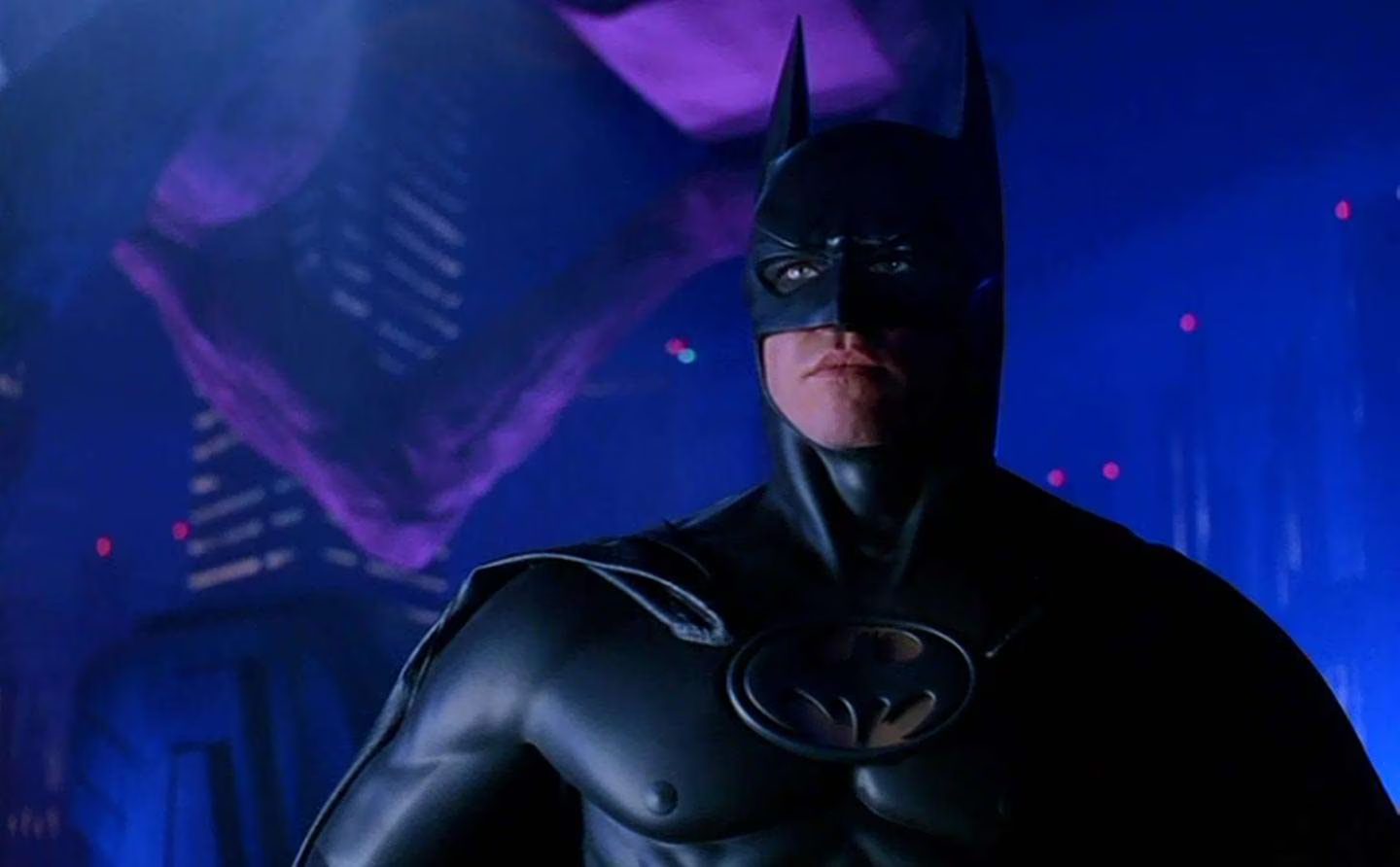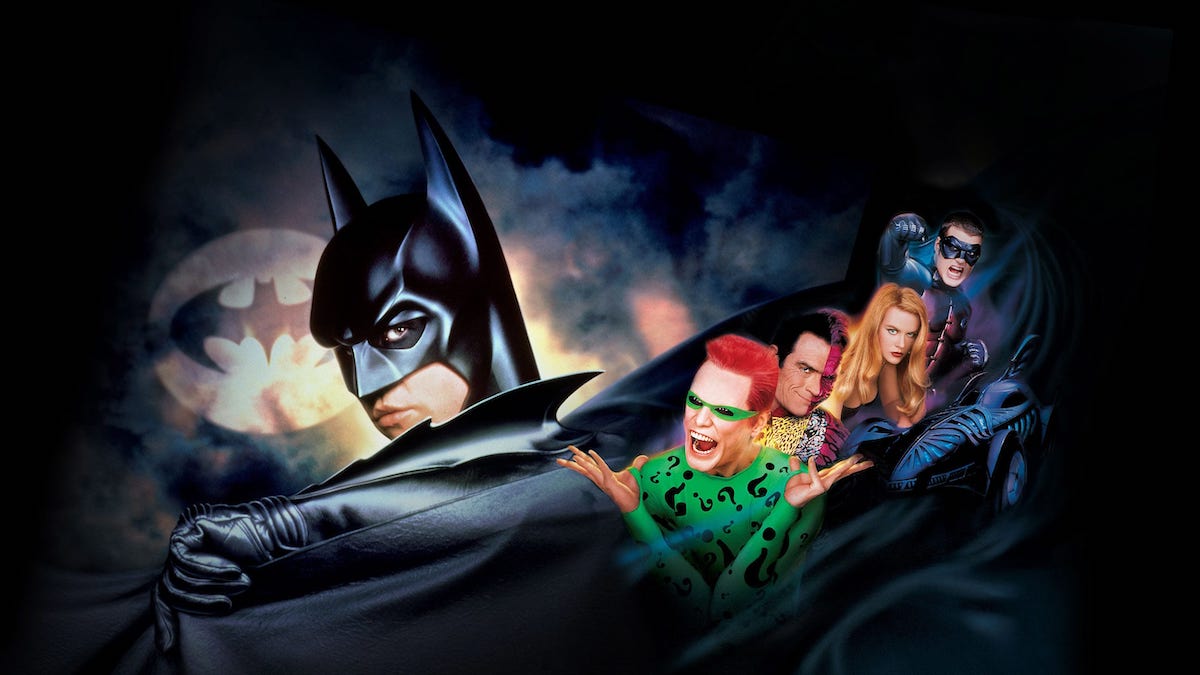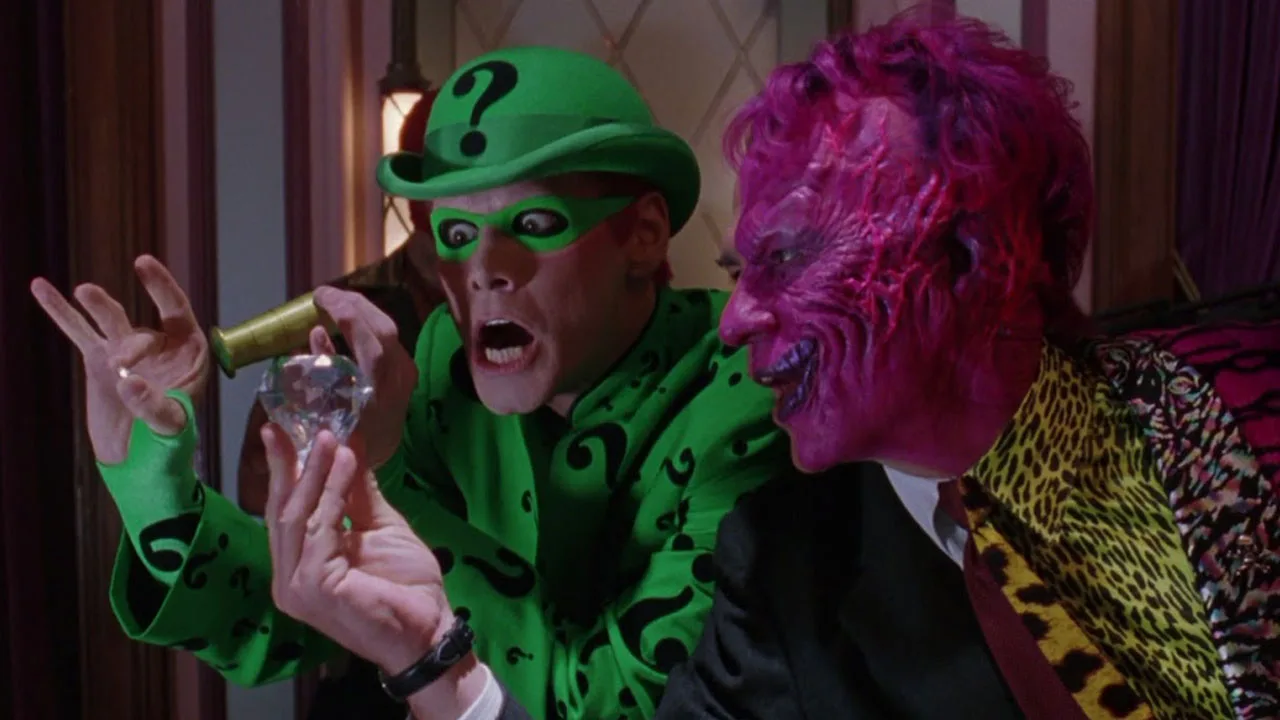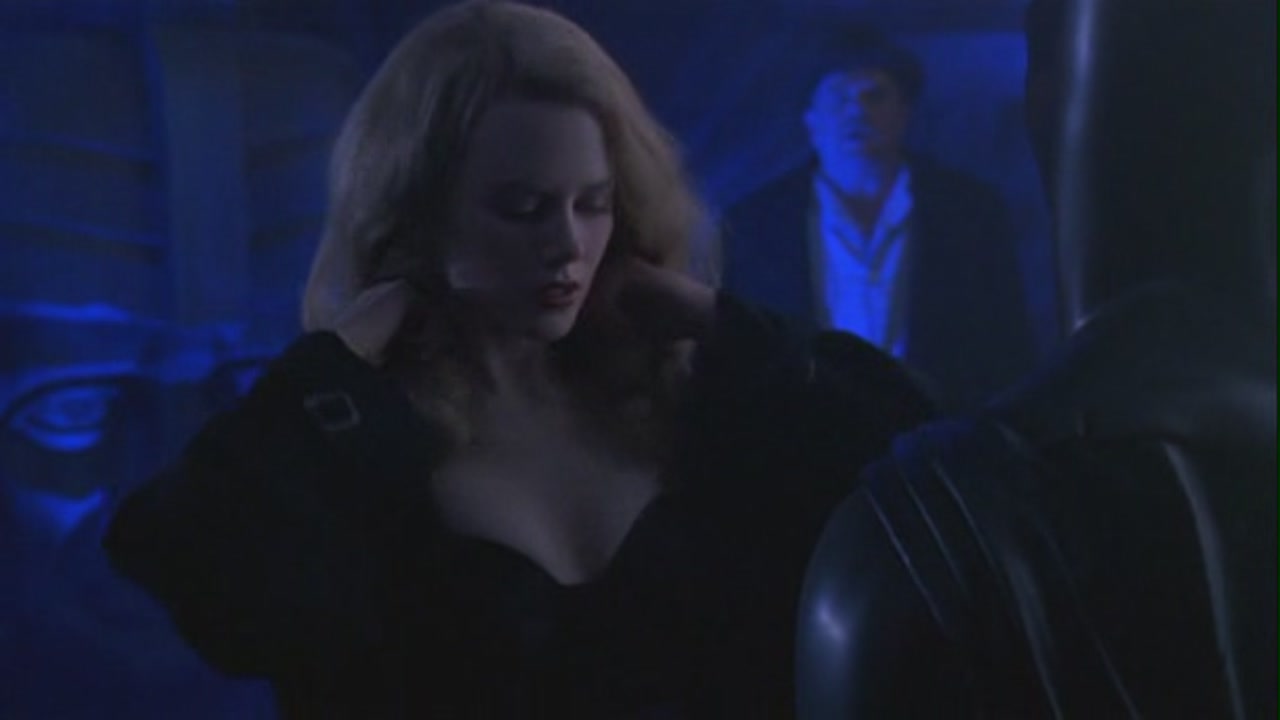Batman Forever (1995) Joel Schumacher

In the summer of 1995, audiences around the world were treated to a new chapter in the iconic Batman film series with the release of “Batman Forever” Directed by Joel Schumacher and starring Val Kilmer as the Caped Crusader, the film boasted a star-studded cast including Tommy Lee Jones, Jim Carrey, Nicole Kidman, and Chris O’Donnell. With its vibrant visuals, dynamic characters, and psychological depth, “Batman Forever” presented a fresh interpretation of the Dark Knight’s world.
Set against the backdrop of Gotham City, “Batman Forever” explores the dual identity of billionaire Bruce Wayne, played by Val Kilmer, who continues his crusade against crime as Batman. This time, he faces two formidable foes: Harvey Two-Face, portrayed by Tommy Lee Jones, and the enigmatic Riddler, played by Jim Carrey. Each villain brings a unique threat to Gotham, challenging Batman both physically and psychologically.

Tommy Lee Jones delivers a memorable performance as Harvey Two-Face, Gotham’s district attorney turned vengeful criminal after a tragic accident disfigures him and alters his psyche. Jones brings a complex blend of menace and tragedy to the role, portraying Two-Face’s inner conflict and obsession with duality.
Jim Carrey, known for his comedic talents, transforms into the Riddler, a brilliant but unhinged inventor who becomes obsessed with outsmarting Batman. Carrey’s energetic portrayal captures the Riddler’s manic charisma and thirst for intellectual dominance, adding a new dimension to the character’s portrayal on screen.

Adding to the film’s allure is Nicole Kidman as Dr. Chase Meridian, a psychologist drawn to both Bruce Wayne and Batman. Kidman’s character provides a romantic and psychological foil to Batman’s inner turmoil, offering insights into his motivations and vulnerabilities.
Chris O’Donnell joins the cast as Dick Grayson, a young acrobat whose family is tragically murdered by Two-Face. Grayson’s transformation into Batman’s trusted ally, Robin, unfolds throughout the film, highlighting themes of redemption and partnership.
Visually, “Batman Forever” departs from the darker tones of its predecessors, embracing a neon-lit, stylized Gotham City that reflects the comic book aesthetic. The film’s cinematography, combined with elaborate set designs and special effects, creates a vivid and immersive world where larger-than-life characters and moral dilemmas collide.

Thematically, “Batman Forever” delves into the psychological and emotional struggles of its characters, particularly Bruce Wayne/Batman. It explores themes of identity, trauma, and the consequences of one’s choices, offering a deeper exploration of the psychological toll of being a superhero.
Critically, “Batman Forever” received a mixed reception upon its release. While praised for its visual style, performances, and thematic depth, some critics noted a departure from the darker tone established by Tim Burton’s earlier Batman films. The film’s blend of action, humor, and psychological drama aimed to appeal to a broader audience, which contributed to its commercial success.

“Batman Forever” grossed over $336 million worldwide, solidifying its place as a box office success and a cultural phenomenon of the 1990s. Its impact on popular culture was evident through merchandise, video games, and subsequent adaptations within the Batman franchise.
In conclusion, “Batman Forever” remains a significant entry in the Batman film series, offering a compelling exploration of its characters and themes against the backdrop of Gotham City. With its star-studded cast, visually striking design, and psychological depth, the film continues to captivate audiences and inspire new interpretations of the Dark Knight’s enduring legacy.